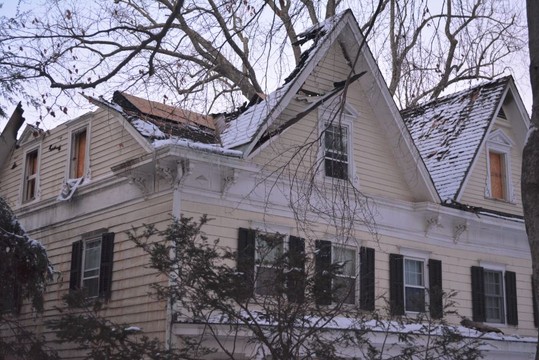Since the coronavirus shut the city down, the number of sales in Manhattan dropped 54 percent and the median price fell to $1 million.

The coronavirus has dealt a blow to the Manhattan real estate market unmatched in recent history, and the prospects of a near-term recovery remain unclear.
The number of closed sales in the second quarter were down 54 percent compared to the same period last year, the largest decline in at least 30 years, according to a new report from the brokerage Douglas Elliman. The median sales price fell 17.7 percent, compared to the same time last year, to $1 million, the biggest drop in a decade.
The number of contracts signed for apartments in June, the latest indicator of buyer appetite, was down 76 percent, compared to the same time last year.
“This is what you get when the market is not able to function,” said Jonathan Miller, a New York appraiser and the author of the report, noting that in-person apartment showings in New York City were banned for nearly the entire quarter. “It’s an extreme moment, to put it lightly.”
Even after a full quarter of sales data in the midst of the pandemic, outlining the shape of an eventual recovery is difficult. More than 90 percent of the sales recorded in the second quarter were actually signed before the virus gripped New York in March, said Bess Freedman, the chief executive of the brokerage Brown Harris Stevens.
“A lot will ride on what happens with schools at the end of the summer,” Ms. Freedman said, because few potential buyers with children who have left the city to escape the pandemic will choose to return, if virtual classrooms continue.
Pent-up demand, from buyers who were unable to view apartments before the city started to reopen, is likely to fuel sales in the next quarter, and home sellers seem to agree. Last week, 550 new listings hit the market, nearly twice as many as in the same week last year, according to UrbanDigs, a real estate data firm. But overall, listings in Manhattan are still down 26 percent compared to last year, the first year-over-year drop in inventory in five years, according to the Corcoran Group.
“I’d like to say it dropped because we sold it all, but that’s not the reality,” said Pamela Liebman, the chief executive of Corcoran, noting that many sellers pulled their homes off the market because of the shutdown.
Despite the significant drop in sales price in the quarter, more time is needed to make sense of the sharp decline. “There are plenty of examples of discounts, and just as many without,” said Mr. Miller, who notes that the market is only now entering a stage resembling normalcy.
One of the looming questions heading into the third quarter is how the pandemic will shift buyer preferences. There has been a spike in search traffic for apartments with outdoor spaces and home offices, said Rory Golod, the regional president of the brokerage Compass.
“People are more attracted to a property that no one has ever lived in before,” said Steve Kliegerman, the president of Brown Harris Stevens Development Marketing, adding that the shift could be a boon for the new development market. That is not yet the case, though. Just 98 contracts on newly built apartments were signed or closed from mid-March to mid-June, a 75 percent drop from the same period last year, according to a report from his firm.
Several agents have said that units in larger buildings have been a particularly hard sell, because of concerns over crowded elevators and shared lobbies. And even though state guidelines no longer prohibit in-person showings, some buildings have not relaxed their rules and are still refusing to allow move-ins or apartment showings.
There may be more lasting changes in the months to come. The share of all-cash buyers dropped to 41 percent, down from an average of about 50 percent over the last several years, Mr. Miller said. That could have major implications for the luxury market, which had been propped up by investment buyers who typically bought without financing.
The market may return to some semblance of normal by the first quarter of 2021, said Garrett Derderian, the chief executive of GS Data Services, a real estate analytics firm. But that will depend not only on whether the city experiences another wave of infections, but also on whether the state decides to raise income taxes to shore up pandemic-related budget shortfalls.
read more…




